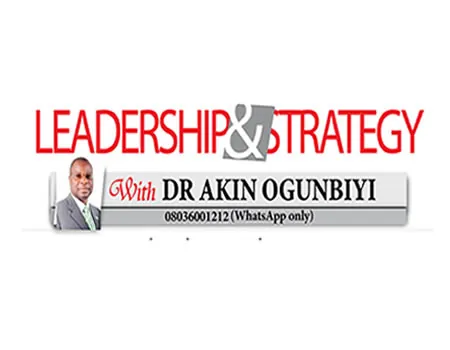Copyright Forbes

Have you ever worked with someone who makes you cringe whenever you hear their voice? Or do you ever find yourself walking on eggshells around a particular person? We’ve all been there. No matter what someone says, this person always finds an issue with it. An offhand comment or a neutral email creates tension. What begins as careful communication can quickly become emotional quicksand. Understanding how to collaborate with these co-workers is the key to a healthy workplace. The phrase “age of offense” has emerged as cultural shorthand for what many see as a period of heightened sensitivity. It isn’t a formal or legal term, but an informal expression often used in public discourse to describe the social climate surrounding social media and political polarization. Pew Research published a 2024 report stating that 62% of U.S. adults say that “people being too easily offended by things others say” is a major problem in the country today. In eight years, the percentage increased slightly. The platform reported in 2016 that most Americans (59%) say “too many people are easily offended these days over the language that others use.” Additionally, 53% of employees handle “toxic” situations by ignoring them, according to Inc., and spend 2.8 hours per week dealing with difficult situations, amounting to approximately $359 billion in paid hours. MORE FOR YOU Understanding The Hypersensitive Co-worker A co-worker who frequently feels slighted isn’t necessarily overreacting for attention. Often, their sensitivity stems from past experiences or burnout. They may interpret neutral actions as personal attacks or view differing opinions as disrespect. Recognizing this context doesn’t excuse poor behavior, but it helps you respond strategically rather than emotionally. Psychology Today reported that overall, about 15 to 20% of the population is thought to be highly sensitive. HSPs are thought to be more disturbed than others by violence, tension or feelings of being overwhelmed. Start by observing patterns. Do they get upset when excluded, corrected, or simply when others disagree? Identifying triggers guides your communication. Instead of tiptoeing, aim for clarity and empathy. For instance, prefacing feedback with intent—“I’m sharing this because I want our project to succeed”—prevents misinterpretation. Other examples include: Recognize their feelings without taking responsibility for them: “I can see that came across differently than I intended. Let’s talk this through.” Clarify intent early: ”I’m sharing this because I want us to get the best outcome on this project.” Refocus on solutions: “I understand that was frustrating. What can we adjust to move forward?” Setting Boundaries Without Walking On Eggshells Boundaries aren’t about control; they’re about consistency. If a colleague routinely takes offense, over-accommodating them can create an unsustainable dynamic. The key is to remain professional. Use assertive communication by acknowledging feelings without over-validating. For example, “I can see this upset you. That wasn’t my intent. Let’s find a way forward.” Avoid lengthy justifications or emotional debates. This prolongs tension. Document interactions if the behavior disrupts collaboration, and don’t hesitate to involve a manager or HR if it escalates. Their role is to mediate and ensure psychological safety for everyone, not just the most vocal team member. Here are other ways to set boundaries using assertive language: State expectations clearly and calmly: “I value working together. In this capacity, I need to be able to share feedback without it being taken personally.” Setting expectations early prevents repeated misunderstandings and reinforces mutual respect. Hold your ground without hostility: “I understand you see it differently. As team lead, my decision stands.” Assertiveness is about firmness, not force; it communicates confidence while keeping emotion in check. Redirect conversations that spiral: “I think we’re moving away from the main issue. Let’s focus on solving the problem.” This keeps discussions productive and signals that emotional detours won’t derail the task at hand. Strengthening Team Culture A workplace that normalizes feedback and emotional maturity minimizes drama before it starts. Healthy cultures model resilience by addressing misunderstandings quickly and giving balanced feedback. Consider adopting “clarify before reacting” as a team mantra. This approach transforms offense into opportunity for understanding. Regular check-ins help. When people know how to express disagreement constructively, the need to take things personally diminishes. How To Tell If You’re The Hypersensitive Co-Worker Emotional sensitivity is information. But if you frequently feel disrespected, excluded or criticized, it might be time for self-reflection. Ask yourself: “Do I often assume negative intent behind neutral actions?” “Do I replay conversations, searching for slights?” “Do colleagues seem hesitant to give me feedback?” If the answer is yes, consider that defensiveness might be protecting an insecurity rather than solving a problem. Practicing emotional detachment means staying grounded enough to respond with perspective; this approach takes the impulse out of the reply. If the issue is perpetual, seek professional help to understand the root cause. If you find yourself in a situation, focus on impact rather than intent. Emotional intelligence isn’t about never feeling offended; it’s about choosing what to do next. It’s important to receive information before jumping to conclusions: Ask before interpreting: “Can you help me understand what you meant by that?” This keeps the focus on understanding. Additionally, it often reveals that no insult was intended. Check your interpretation: “Is it possible I’m reading this differently than you intended?” Asking this invites dialogue and shows emotional maturity. It turns confrontation into curiosity. Shift your focus from what was said to what can be learned: “I felt uncomfortable when that was said. Was that how you meant it to come across?” This balances honesty with openness, acknowledging your feelings while giving the other person space to clarify. When communication happens faster than reflection, choosing curiosity over assumption is a competitive skill. The most effective professionals are those who pause, process and respond with composure. When we learn to separate intent from impact and conversation from confrontation, we create more self-aware teams. MORE FROM FORBES ForbesWhat A Company’s Communication Style During The Hiring Process Reveals About Its CultureForbesWhen FOMO Becomes A Wake-Up Call For Women In Technology



